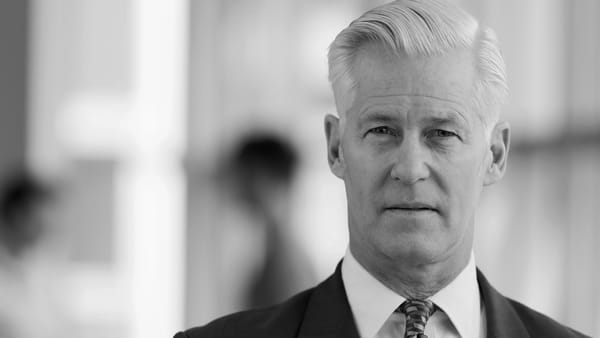Stop Selling Your Resume, Start Selling Outcomes
Move the needle by shifting from past glories to forward potential. That’s where the real value lies, and that’s how you’ll get the offer.

Executives often enter interviews armed with a polished resume and stories of past triumphs. It’s a natural impulse. Years of hard-earned success feel like a shoe-in to the next role.
Your history may demonstrate competence, but interview success is entirely contingent on your ability to tie that in to the employers challenges. This is where I see so many executives go wrong: they focus on input instead of impact.
It requires a fundamental shift in how you approach the conversation. Your past is the context - it sets the stage - but the real story is what you can do for them.
To stand out, you must move beyond reciting past glories and focus instead on how your skills, insights and leadership will solve the specific challenges your prospective employer faces.
The Narrative Shift: Past as Context, Future as Focus
Many executives fall into the trap of presenting their resumes as a highlight reel of past accomplishments. But what truly matters is how those experiences equip you to tackle what’s ahead.
The shift is subtle but profound, and it's why so many 'perfect on paper' candidates fail to make it past the interview. Companies want to know how your experiences have prepared you to solve their problems. It’s not enough to recount achievements. You need to connect those achievements to the company’s future goals.
Your ability to frame your narrative in forward-looking terms will significantly differentiate you from other candidates. A strong history is interesting, but a compelling vision for the future is exciting, and it’s excitement that moves the needle.
Diagnosing Pain Points: The Critical Differentiator
The most critical aspect of your preparation is diagnosing the company’s pain points.
Employers aren’t hiring in a vacuum. They’re seeking someone to solve specific challenges and seize specific opportunities. Understanding those challenges allows you to position yourself as the solution, not just another candidate.
This requires deep research. Go beyond surface-level information. Study their financial reports, analyst commentary, recent announcements and industry trends. Identify patterns, risks, and opportunities. Ask yourself:
- What external pressures might they be facing?
- What's likely around the corner?
- What internal inefficiencies could be holding them back?
- Where are they vulnerable—and where are they poised to grow?
This level of insight transforms your pitch. It shows not only your expertise but also your ability to think like a partner. Employers want someone who sees the landscape as they do, and better yet, with sharper clarity.
The Power of Potential: Shifting the Conversation
Shifting the conversation from what you’ve done to what you’ll do is essential. What outcomes will you create? How will you tackle the challenges ahead? How will your leadership catalyze growth, innovation or transformation?
When you reframe the discussion around your ability to drive results, you change the dynamics of the interview. It’s no longer about justifying your candidacy but about making a compelling case for your future impact.
Impact Over Input
This shift is strategic. Internalizing the principle that your value lies in your impact, not your input, strengthens your position in every aspect of the hiring process, including negotiations.
The executive who can articulate how they’ll directly affect the bottom line or advance strategic goals commands respect and confidence. Confidence from employers that their investment in you will deliver outsized returns.
By focusing on outcomes rather than effort, you elevate yourself from being a skilled candidate to a critical asset. There is a big difference.
The Art of Framing
An interview needs to feel natural. That doesn’t mean winging it. It means creating a strategic narrative that positions you as the natural solution to the company’s challenges.
Start by defining two key messages you want to convey:
- How your experience and track record aligns with their specific challenges.
- The tangible outcomes they can expect from your leadership.
Everything you share in the interview should reinforce these points. Be selective about the stories you tell and the details you highlight. Your goal is to create a cohesive, compelling vision of your potential.
Building the "We": A Psychological Advantage
One of the most subtle yet effective strategies in an interview is to speak in terms of “we.” This language creates a psychological shift. It positions you as already part of the team, collaborating with them to overcome challenges and achieve goals.
When you frame your answers around shared success, you foster a sense of partnership. You’re no longer an outsider seeking a role, you’re a future colleague invested in their success.
Future Victories Win the Day
Ultimately, your value as an executive lies in what you’ll accomplish, not what you’ve done. While your history is an important foundation, it’s your potential that differentiates you. The executives who stand out are those who have done the homework to understand a company’s pain points and have a vision for how they’ll deliver measurable outcomes.
Reframe your narrative. Be strategic in how you frame your questions. Diagnose their challenges. And most importantly, show them you are truly aligned. The best way to win the role is to make them feel like you’ve already started delivering the results.





